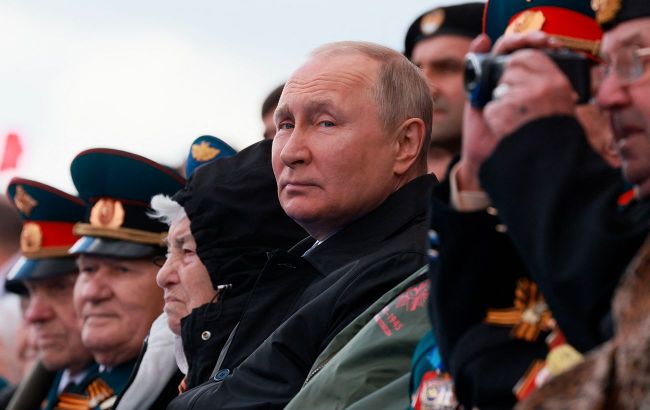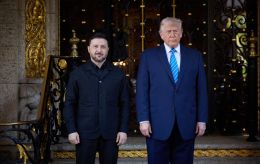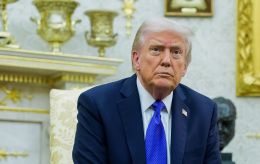Putin's May ceasefire: Why Russia needs three days of silence and how it threatens frontline situation
 Putin at the Victory Day parade (Photo: Getty Images)
Putin at the Victory Day parade (Photo: Getty Images)
For the second time, Vladimir Putin has proposed a ceasefire - this time for three days, in honour of Russia's Victory Day celebrations.
Why does the Kremlin want to do this, what is Putin afraid of, and how could it affect the frontline - read in the RBC-Ukraine material.
The Russian President, Vladimir Putin, has once again announced a short ceasefire from May 8 to May 10. The "break" is supposedly needed by the Kremlin to celebrate Victory Day with a parade of tanks and soldiers on Red Square.
Previously, Putin announced an Easter ceasefire almost an hour before it was set to begin. This time, he decided to extend the notice period, declaring a halt to hostilities more than a week in advance.
Ukrainian political and military experts remain skeptical, while Western allies have yet to comment on the Russian leader’s latest "gesture of goodwill." Meanwhile, Moscow is preparing to use the pause to its maximum advantage.
Ruined parade
Putin has proposed a short-term ceasefire for the second time, and this is the first such initiative since the start of the full-scale invasion. For over three years, Ukraine had offered ceasefires in various formats, but they were never even discussed in Moscow. Everything changed when Donald Trump became president of the United States. Pursuing a course toward a swift peace settlement, Trump repeatedly claimed that Russia allegedly wanted peace too.
Not wanting to lose the newly established contact with Washington, Putin actively echoed Trump’s statements — but only in words. His actions left no ambiguity: Ukraine continued to be attacked, and Russian troops kept advancing on the front. Over the past month, Russia has inflicted several devastating strikes on cities, killing around a hundred people. All this was accompanied by cynical statements from Moscow and Putin himself that he was "always ready for peace" and had "never wanted war."
Putin announced the first ceasefire when the situation began to escalate. Seeing that the war was not ending either within 24 hours or even within several months, the United States, represented by Trump, threatened to pull out of negotiations. This did not suit Russia, which wanted to maintain contact with Trump, so Putin declared an Easter ceasefire — literally an hour before it was supposed to start. Adding to the absurdity was the fact that just a few minutes after the "ceasefire" began, an air raid alert was declared in Kyiv. There was little doubt this was simply a performance for the American audience. Moreover, on the frontlines, Putin’s ceasefire had no real effect.
"They were restoring fortifications — we saw plenty of evidence of that. They were evacuating their wounded, bringing up ammunition and food to the front line, and conducting all activities aimed at preparing for certain actions. They learned that we respond symmetrically, so where they needed to maintain silence, they did. And where they planned major operations, they kept attacking. There were hundreds of mortar and shell impacts," noted former spokesperson of the Ukrainian General Staff, Colonel Vladyslav Seleznov, in a comment to RBC-Ukraine.
At the end of the ceasefire, the Ukrainian side reported that it had effectively failed because of Russian violations. The attacks continued, Russian forces advanced and tried to fortify their positions, and conducted reconnaissance along the front line. In short, they did everything possible to use the "pause" to their advantage. However, the Ukrainian army did not play by the Kremlin’s rules and responded to the enemy in kind. As a result, there was no real cessation of hostilities.
Moreover, Kyiv decided to seize the "peacekeeping" initiative from Putin and immediately proposed extending the ceasefire beyond the Easter holidays. As expected, Moscow rejected the idea.
Today, Putin has announced a ceasefire for the second time, doing so in advance and proposing a longer period of silence. There are several reasons for this, and one of the main ones is the scale of the upcoming celebrations. For Russia’s current political climate, Victory Day is one of the most important holidays — a symbol of their "struggle," especially under present circumstances.
Additionally, this year, Russia will mark the 80th anniversary of Victory Day, and to honor the occasion, Moscow is planning to gather various foreign guests near the Mausoleum — whoever is still willing to visit. Putin is eager to showcase the grandeur of the celebrations, and Ukrainian drones flying toward places like Balashikha would hardly contribute to that goal.

Putin at the Victory Day parade (photo: Getty Images)
"Putin is afraid that the Victory Day parade on May 9 could be spoiled. I understand that the Russians will pull in as much air defense as possible and control everything, but even a single drone over Red Square — without explosions, without anything, just one spotted by Chinese guests — would be a huge embarrassment for Putin. He understands this and will act accordingly," said Yevhen Mahda, director of the Institute of World Policy, in a comment to RBC-Ukraine.
That’s why a few days of silence in the skies are very important for the Kremlin right now. Probably for this reason, Putin decided to announce the ceasefire earlier. First, it is genuinely important to him that no enemy UAVs reach Russia. Second, by doing so, he inserts himself into the information space, positioning himself as its "moderator."
Movements on the front
During the previous ceasefire, as mentioned above, no one actually stopped military operations on the battlefield. Already by midday on the holiday, the General Staff of Ukraine reported that in some sections of the front, attacks not only failed to subside but even intensified. The Russian army was most active in the Pokrovsk and Siversk directions, in particular using heavy weaponry. From midnight to noon the next day, Russian forces launched 26 assaults on Ukrainian positions.
By the end of the day, Ukrainian President Volodymyr Zelenskyy summarized the "ceasefire" results — 2,935 attacks incidents along the front line.
"Across the entire front, there were 96 Russian assault actions, 1,882 attacks on our positions, including 812 with heavy weapons, and more than 950 uses of Russian FPV drones. This day was not enough for Moscow to respond either to the proposal for a full ceasefire for the 30 days following Easter, or even to the offer to extend the 'sky silence,'" Zelenskyy wrote.
Given this, it is quite obvious that during the May ceasefire, the Russian army will continue its assault and offensive actions. They will stockpile ammunition, carry out rotations, and strengthen their logistics. In short, they will do what is difficult to achieve under continuous fire.
"It’s important to understand that the enemy is acting to create more problems for us later. For example, I saw reports that the enemy has accumulated resources on the left bank of the Kherson region. Why would they do that? To wave flags on May 9? No. They are preparing for certain actions. This applies to other sections of the front as well. The enemy is using all resources and means to create problems for us," added Seleznov.
Reaction
Immediately after Putin decided to once again become the headliner in the media space, Ukraine's Ministry of Foreign Affairs responded with a mirror move, once again proposing to extend the ceasefire. Foreign Minister Andrii Sybiha stated that the ceasefire regime could start immediately and be extended for 30 days.
"If Russia truly wants peace, it must cease fire immediately. Why wait until May 8th? If the fire can be ceased now and since any date for 30 days—so it is real, not just for a parade. Ukraine is ready to support a lasting, durable, and full ceasefire. And this is what we are constantly proposing, for at least 30 days," Sybiha wrote on Twitter (X).
Neither Putin nor his trusted figures, like Lavrov or Peskov, have commented on this. Just as they made no statements when Donald Trump offered them a ceasefire. The American president’s views on the situation often shift, but after he meets with Zelenskyy in the Vatican, the pendulum now seems to be swinging toward Ukraine. Trump himself hinted at this, posting on his Truth Social platform that Putin might indeed not want to end the war.
This may be another important reason why Putin decided to announce a ceasefire. Overall, his tactic looks rather simple — he concedes slightly when he sees the situation worsening for him. After nearly a hundred days of Trump’s presidency, it seems to be the first time Trump has spoken so sharply about Putin, whom he previously might have called a "good guy." It would be logical for Russia to make some peaceful gesture, such as proposing direct talks with Kyiv or announcing a May ceasefire.
Experts believe Ukraine should use this time wisely — at the very least, by preparing an action plan together with its allies.
"Ukraine and the countries of the old world must demonstrate a united position. Nothing prevents Ukraine, together with France, Germany, and the United Kingdom, from working together and showing that we can influence the situation. The West is very tired of the war. Sometimes it feels like they are more tired than we are. We need to show that we are interested in ending the war — but not on Putin’s terms," Mahda added.

